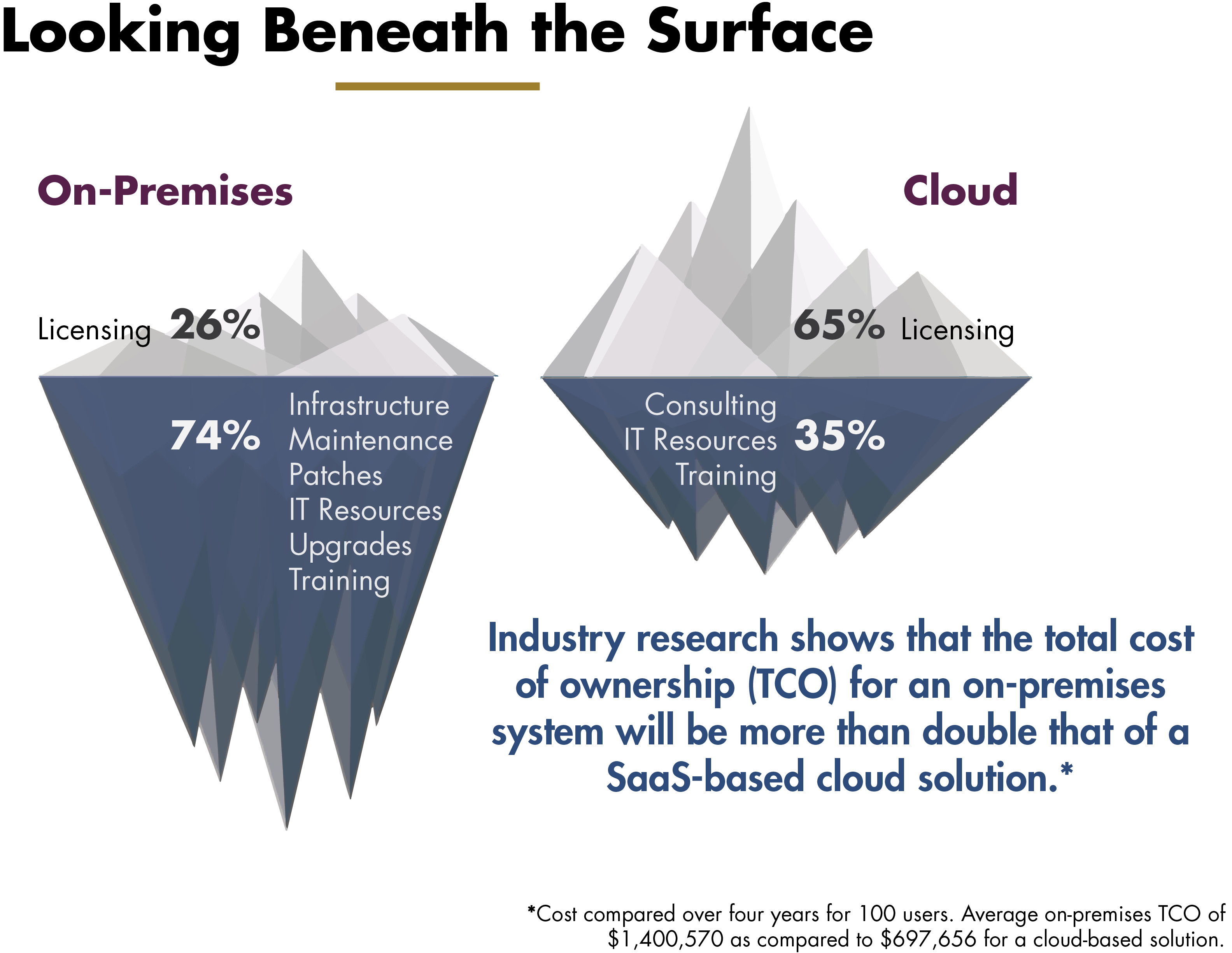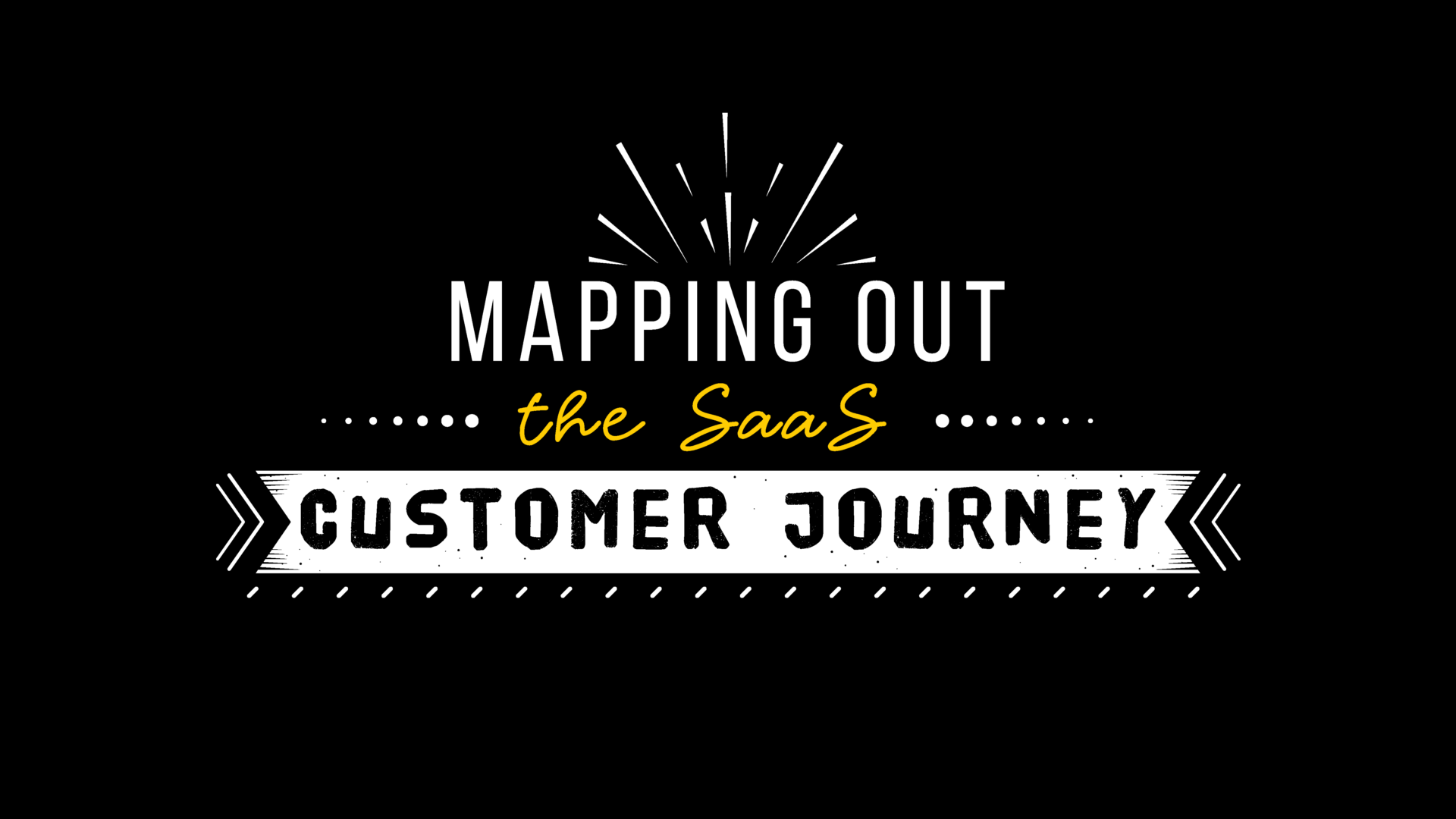Gartner predicts the SaaS industry will boom to $75 billion by 2020, but how do you secure a slice of that pie? In the quest for SaaS conversion rate optimization, there’s one roadmap that is important above all, your customer journey.
Let’s explore what goes into a SaaS customer journey, and how you can use it to increase your conversion rates.
What Makes SaaS Different (and Why it Matters)
Why are SaaS solutions becoming so popular? For starters, they are cheaper and easier to implement and maintain for businesses. Research has found that the total cost of ownership for on-site software is twice as much as a cloud-based SaaS solution. That’s because cloud-based solutions lack the need for in-office infrastructure, IT help, maintenance, and more.

We understand that cloud-based solutions are less expensive in the long run for businesses, but how else do SaaS companies vary from other types of companies? Here are a few important differences.
SaaS Solutions are a Recurring Sale
By its nature, the sale of a SaaS doesn’t happen once; it happens every month. Unlike a one time product, a SaaS user needs to feel confident in their choice both when they initially sign up and every month after that. Therefore, SaaS companies have to pay attention to metrics like retention and churn more than other industries, like a clothing retailer. It’s an ongoing relationship. This ongoing relationship also places a greater importance on bringing in high-quality leads that are the ideal target customer who is most likely to find value in the product, and therefore stick around.
SaaS isn’t just a product; it’s a service
There are relationship and service element to all business transactions, but the word “service” is right in the name for SaaS companies. Since these elements of technology and service are interwoven, different departments and functions are more closely interrelated. As a result, all teams within the organization need to work together seamlessly to increase conversions.
These few key differences between SaaS companies and other B2B business formats don’t just impact day to day operations and finances; they are also reflected in the SaaS customer journey.
Mapping out the SaaS Customer Journey
Since SaaS companies are different in their foundation than other types of companies, it makes sense that their customer journey would be different too. While the same first steps of the journey are traditional, SaaS companies need to pay attention to two more stages at the end if they want to increase revenue. Here are the stages of the SaaS customer journey.
Awareness
The SaaS customer journey begins in the awareness phase. At this point, your potential customers are just becoming aware that they have a problem, and need to determine if it’s a priority to solve it.
At this stage, users are just barely scratching the surface of how they may solve their problem, and they are nowhere near ready to hear a pitch about your solution in particular. In fact, 72% of B2B customers start with a generic search, not a company specific one.
Consideration
A SaaS buyer in the consideration stage has clearly identified their problem and is looking at the different solutions they could pursue. While the name may imply that they are only considering different competitors of the same type of solution, that’s not the whole story. In fact, the biggest challenge for a B2B buying group isn’t choosing a supplier of a solution; it’s determining what type of solution they need.
Decision
By this stage, the buyer has narrowed down a solution category and needs to hone in on a supplier. They’ll be evaluating the different companies and deciding on what’s best for them. While going through the decision process, there may be a lot of noise for buyers. The potentially overwhelming amount of information and opinions a customer could face at this stage makes it important to make your position and benefits clear.
Retention
While the three customer journey stages we’ve covered so far are standard for most types of businesses, it’s time to get into the parts of the SaaS customer journey that are unique. The retention phase is focused on new customers who are using your SaaS.
At this point, your attention has shifted from converting customers to keeping them happy and engaged. This is a critical stage that’s even more important to SaaS companies. The reality is that if you increase your retention rate by just 5%, you can increase your company’s future profitability by 75%. It should come as no surprise then that more than half of SaaS companies Increased their spending on customer retention in 2016.
Advocacy
After retention in the SaaS customer journey comes advocacy. Think of it this way; if retention is surviving, advocacy is thriving. Users at this stage are telling their network about your solution, and become advocates for your brand. This should be your end goal for every single new user. Not only is it satisfying and profitable to have engaged users that stick around for a long time, 92% of customers trust word-of-mouth recommendations.
Using the SaaS Customer Journey for Conversion Rate Optimization
Knowing what the stages of the SaaS customer journey are won’t help your conversion rate optimization if you don’t know how to put it to use. Here we’ll explore what types of content to use at each stage to serve potential customers at each state, as well as the questions to consider to increase your conversion rates.
Awareness
In the awareness stage potential users are best served and connected to with content that is informative and educational. Topics are the broadest at this stage since they are only just beginning to grasp their problem.
The best types of content to use are:
- Blog posts
- eBooks
- Expert advice columns on broad issues
- Industry research that highlights their problem, and that they aren’t along
There are a few ideas to keep in mind to fuel your SaaS conversion rate optimization potential at this stage. You need to:
Understand how they describe their challenges and desired outcome to tailor content
In the awareness stage, you aren’t approaching the person as a solution provider but as a knowledgeable peer. In order to be able to talk them about their challenges and desired outcomes in the language they would use, you’ll need to do research. Head to other blogs or forums to see your audience talk about their issues and how they describe their situation.
Lay out the consequences of a customer not taking action to solve their problem increases urgency
Remember when we said your customers are still trying to decide if this issue is a priority at this stage? Along with talking about their challenges, calling attention to the consequences of inaction are a powerful conversion motivator. Now, this doesn’t mean you should artificially inflate negative scenarios to scare people into buying your SaaS. You simply want to give them resources to evaluate the challenge and what may happen down the line in the context of their unique situation.
Consideration
In the consideration phase, your target audience is sorting through the different approaches they could take to solve their problem. Therefore, content for these people should point out ways to solving the problem. This information can be served up via:
- Podcasts
- Your product site pages
In order to maximize the likelihood of conversions you need to:
Uncover how buyers perceive different pros and cons of solution types
A little research is helpful at this stage and can be obtained the same way you learned about your audience for content in the awareness stage. Understanding how they perceive different pros and cons makes it easier for you to address their pain points and play up your strengths.
Address different types of solutions and how they compare to your exact solution
Since users at this stage are still considering what kind of solution they want to pursue, you should present information that compares you to other routes they could take. By providing value and guidance throughout their journey, you are establishing a relationship.
Decision
The decision phase is crunch time for using knowledge of the customer journey to your advantage for conversion optimization. By this point, the potential user has established that they have a problem and know what type of solution they want, and it’s time to make the decision among competitors. Types of content that are ideal for SaaS customers at this stage are:
- SaaS company comparisons
- FAQ pages
- Free trials
- Testimonials
Since this is the point of the customer journey when users convert, you should pay close to attention to:
Addressing concerns they may have about your SaaS vs. others
Having a page dedicated to a comparison between you and your competitor lays it all on the line transparently and helpfully for potential users and makes their decision easier. It’s likely they’ll be searching for the information, so take advantage of the opportunity to own that conversation.
Helping make the transition easier by providing resources around implementation plans or training for new team members
Another way to optimize your SaaS conversions is to provide resources before a user converts that will benefit them after they purchase. For example, someone considering a particular SaaS may be concerned about how they will incorporate it into their current workflow, how they will introduce it to their team members, and what type of learning curve they’ll experience. If you can alleviate those challenges before they’ve converted and take the weight off their shoulders with free content, they’ll be that much closer to choosing you.
Retention
SaaS users in the retention phase are using your product but may need extra boosts to keep them engaged and informed. You can do so through:
- In-app messages
- Email campaigns
- Training
- Resource libraries
The best ways to ensure retention include:
Finding ways to evaluate if they are happy with the product
Whether it’s a dedicated program or by simply checking in, you need to maintain the conversation and relationship.
Optimizing your onboarding process
If a new user starts off on the wrong foot and either doesn’t see the value in your product or feels overwhelmed by capabilities, they’ll be more likely to churn. Testing onboarding strategies and evaluating their success is critical to long-term retention.
Find which actions and engagements lead to retention, and encourage new users to do them
As a part of your onboarding optimization, you should start to establish an understanding of what key actions and engagements act as precursors to retention. Then, make sure all new users are taking those steps.
Advocacy
In the advocacy stage, you want to “wow” users so much that they can’t keep quiet about how great your SaaS is. Some ways to encourage this sharing include:
- Asking for reviews and testimonials
- Referral programs
- Social posts and case studies that share user stories
The most effective ways to direct efforts in the advocacy stage to future conversions are:
Testing different referral incentives and methods
Don’t assume a referral strategy is one and done. Test different incentives and methods to find which works best for you and your users.
Make it easy for users to share positive feedback
Even satisfied users may not share their positive reports if they aren’t asked. That’s why you should ask for feedback, as well as providing resources that make sharing thoughts accessible.
The SaaS customer journey follows the typical stages of awareness, consideration, and decision. However, a SaaS company’s recurring customer relationship and unique combination of product and service mean that two additional phases of retention and advocacy must be considered. SaaS conversion rate optimization can be achieved by using knowledge of the customer journey and understanding what types of content to deliver for individuals at each stage 0f their journey.
Get in touch with us to start strategizing on mapping out your SaaS customer journey.
